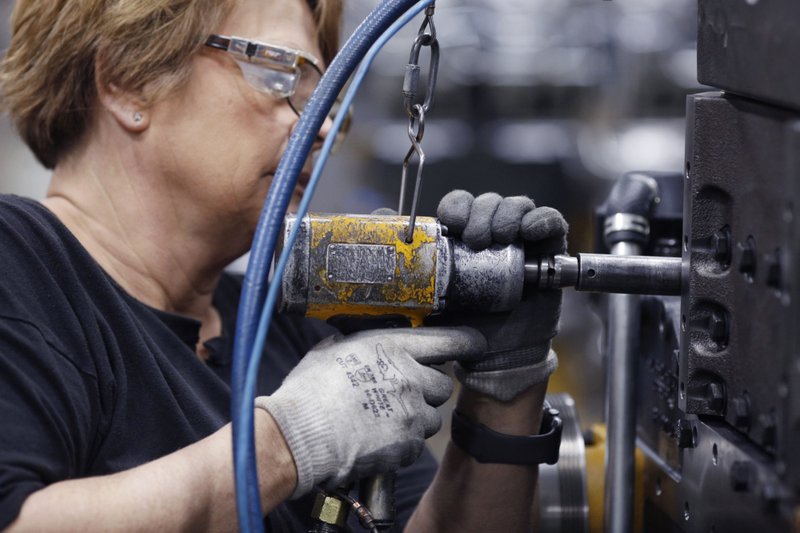U.S. factory output rose by more than expected in June on a solid gain in motor-vehicle production, suggesting American manufacturing is regaining a foothold despite fluctuating trade policies and a global slowdown.
Manufacturing output climbed 0.4% from the previous month after an unrevised 0.2% increase in April, Federal Reserve data showed Tuesday. Total industrial production, which also includes mines and utilities, was unchanged -- missing economist estimates for a 0.1% gain -- as milder-than-usual weather reduced demand for air conditioning, according to the report.
The data, coming on the heels of better-than-projected retail sales figures earlier Tuesday, adds to signs the economy is holding up as national employment and incomes gain. Still, factories face head winds from slowing global growth and lingering trade uncertainty, forces that are pushing Fed policymakers toward a widely anticipated interest-rate cut later this month.
Production of motor vehicles and parts increased 2.9%; excluding cars, manufacturing production rose 0.2% after no change in May. Other sectors that saw gains include petroleum and coal products, and computer and electronic products.
Even so, during the second quarter factory production fell at a 2.2% annual rate for the first back-to-back declines since 2016 -- evidence of weakness the central bank could potentially cite as one of the reasons for an interest-rate cut.
The April-June quarter saw sharp decreases in the making of machinery, motor vehicles, fabricated metals, textiles, paper and plastics, and rubber products, among other goods.
In addition, regional surveys by Fed district banks showed factory activity cooled in June. The Institute for Supply Management's national factory index also fell for the third-straight month, touching the weakest level since October 2016.
Average capacity utilization, measuring the amount of a plant that is in use, fell to 77.9% in June from 78.1%.
Utility output dropped 3.6% after advancing 2.4% the previous month. Mining production rose 0.2%, with oil and gas well drilling up 0.5%.
The import taxes on roughly $250 billion worth of Chinese goods have increased the costs for manufacturers that rely on foreign components, as well as created uncertainties about a global supply chain that keeps factory output steady. President Donald Trump's administration has relied on tariffs as leverage for causing China to trade on more favorable terms with the United States.
The Fed's monthly data are volatile and often get revised. Manufacturing, which makes up about three-fourths of total industrial production, accounts for about 11% of the U.S. economy.
Information for this article was contributed by Christopher Condon and Reade Pickert of Bloomberg News, and by Josh Boak of The Associated Press.
Business on 07/17/2019
